The Aircraft Spotlight feature looks at an airplane type and evaluates it across six areas of particular interest to flying clubs and their members: Operating Cost, Maintenance, Insurability, Training, Cross-Country, and Fun Factor. This month we will compare the two aircraft the Cape Cod Aero Club operates—the Cessna 172 and the Grumman Tiger.
The Cape Cod Aero Club is an equity club founded in 2016 based at Falmouth Airpark (5B6) and Barnstable Municipal Airport (HYA) in Hyannis, Massachusetts. The club started with a Cessna 172 and in the fall of 2019 added a Grumman AA5B Tiger.
With more 172s produced than any other aircraft, it’s fairly common to find one in a flying club. They are reliable, economical to operate and easy to fly. The Tiger, with fewer produced is often overlooked, even though it shares those same traits and is a little sportier.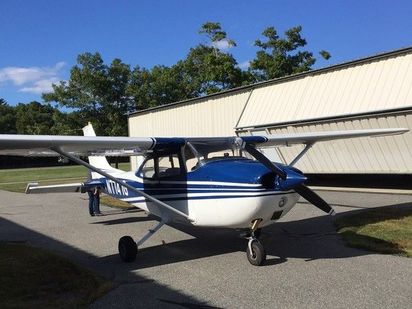
Cape Cod Aero Club Founder and President David Fisichella talks about operating both aircraft and adding the Tiger to their fleet. “We were looking for another 172 and this opportunity for the Tiger came up. We really hadn’t thought about a Tiger but it’s the perfect second aircraft for our club—it’s got a little more performance, and it’s not so different that members have a hard time transitioning from one to the other.”
Operating Costs
Cessna 172
The Cessna 172 Skyhawk debuted in 1956 and is the most produced aircraft in history with more than 44,000 made. It’s a proven aircraft that is easy to fly. It makes a great trainer, it’s economical to fly, and parts are readily available.
The 172 originally featured a 145-hp Continental O-300 engine and a fixed-pitch propeller, which was eventually upgraded to a 150-hp Lycoming O-320 and then a 160-hp version. There are STCs to change the engine to 180-hp, which is useful in high density altitude situations. The STC can also increase the maximum gross weight, which is appealing in many situations.
An online search found a wide swing in prices from about $50,000 for an early 1970s model to well above $200,000 and $300,000 for a newer model produced after 2000.
Cape Cod paid $41,000 in 2016 for their Skyhawk and spent about $10,000 to replace the alternator, starter, interior and add a Stratus transponder with ADS-B in and out capability. David said the aircraft is probably worth $70,000 today.
Cape Cod operates a 1970 C-172L with the Lycoming O-320 engine. They charge $89 an hour, Tach time wet.
Grumman Tiger
“Bang for your buck” is a common phrase Tiger owners use to describe the plane because it’s an airplane that is fairly fast for a low cost. It’s sporty and responsive, simple to maintain, economical to operate, and faster than similar aircraft like a 172 or Cherokee.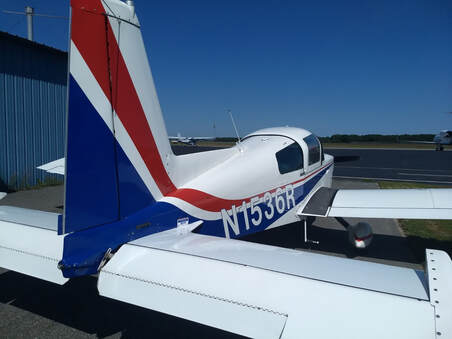
The most popular of the Grumman series that began with the two-seat Yankee in the late 1960s, the Tiger seats four, has a 180-hp engine, and burns around 10 gph. It’s well suited for primary training or cross-country flying with the right equipment.
Grumman produced the AA5B Tiger from 1975 through 1979, and then American General produced the AG5B Tiger from 1991 through 1993. Similar four-seat Grummans include the 150-hp AA5 Traveler and AA5A Cheetah, and the 160-hp GA7 Cougar.
Prices for the mid-70s Tigers range from $60,000 for a VFR-equipped aircraft with an engine nearing TBO to about $100,000 for a better-equipped model. The later versions produced in the 1990s and 2000s may cost a bit more.
Cape Cod’s Tiger is a 1975 model for which they paid $82,000. It had been totally refurbished with several upgrades, such as a split cowling making it easier to service. The propeller was replaced, addressing an AD, and the bonded wing panels were replaced and flush riveted rather than glued. The hourly rate is $98 per hour, Tach time wet.
Maintenance
The annuals for the two aircraft are comparable, although David thought the Tiger might be 10 percent more than the 172. As with any aircraft, the age and how well it has been maintained are important factors, as well as how much you want to make improvements during an annual.
Cessna 172
In general, maintenance isn’t a problem because it’s a 172. Mechanics are familiar with the type and parts are plentiful. However, the FAA just issued a final rule on an AD requiring inspection of the area where the strut meets the door post. It affects the 172 N, P, Q, and RG models, as well several other Cessna types. The inspection is required every 1,000 hours or three years. If cracks are found, Textron has service kits that range from $6,500 to $10,000. 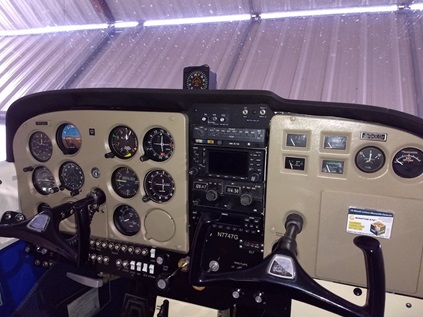
Grumman Tiger
Like the 172, the Tiger is a fixed gear, fixed-pitch propeller, so there is just not a whole lot that can go wrong with the airplane. The most important maintenance item when you have a plane like the Tiger that is not as common as a 172 is finding a good mechanic that is familiar with the make and model. “They know what to look for,” David said. In Cape Cod’s case, there is a mechanic they use at Plymouth Airport with a lot of experience working on Grummans and he found a crack in the engine mount that David doesn’t think other mechanics would have found.
David also noted that the Tiger has a free-castering nose wheel, so you can expect a little more wear and tear on the brakes. The nose wheel can be temperamental in terms of getting it adjusted so it doesn’t vibrate. In addition, you need to be careful using the sliding canopy.
For some Tigers with bonded wings it can be one of their weak spots and requires a good pre-buy inspection, David said. He also noted the Tiger wet wing can be prone to weeping or leaking fuel.
Although the airplane hasn’t been manufactured for quite some time, parts are easy to get. The main parts supplier for Grumman aircraft is Fletch Air, based in Comfort, TX. They can provide anything for the airplane—wheels, wheel pants, windshields, cowlings, anything you need for a Tiger. There also are several owner’s groups that can provide information and support including the Grumman Gang, and the Grumman Owners and Pilots Association (formerly the American Yankee Association).
Insurability
Insurance is easy to get for both aircraft. In Cape Cod’s case they pay about $6,000 total for a policy that covers liability and the hulls for both planes. One of the factors in keeping the rate low is that the club doesn’t do any primary training and David thought the insurance company liked the fact that the club’s instructors (who do the check flights) are also members of the club.
Training
Cessna 172
The 172 is a simple plane to fly and has been used for decades as one of the most common primary trainers. It also makes a nice IFR-platform if it is properly equipped.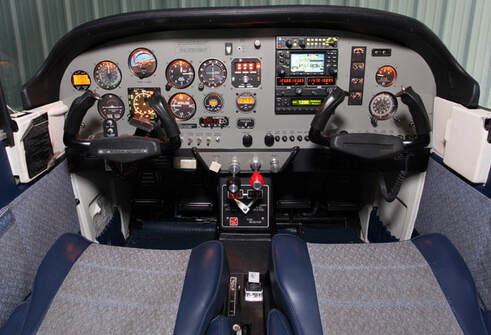
Grumman Tiger
The Tiger also could be used as a primary or instrument trainer if properly equipped. With a fixed-pitch propeller and fixed gear, it is simple to operate. However, it tends to be more responsive to control inputs than a typical trainer and things happen a little quicker than in a 172, so instructors need to be mindful of those differences with students.
It also has a free-castering nose wheel, so steering is accomplished rudder and differential braking, which takes a little more skill than an aircraft with nose wheel steering.
Cross-Country
Both the Skyhawk and Tiger are comfortable, capable cross-country aircraft. Cape Cod Aero has a Garmin 430 GPS and autopilot in both aircraft. The 172 has a single-axis autopilot, so it doesn’t have altitude hold. The Tiger has a two-axis autopilot.
“They’re both the same in that they’re not four passenger, full-fuel aircraft,” David said. “It’s three people and fuel, or four people and limited range.” Both have a useful load of about 775 lbs with full fuel. Most members prefer the Tiger for longer flights because of the added speed and the more capable autopilot.
Cessna 172
The 172L model holds 38 gallons and has a range of about 400 miles with a cruise speed of 130 mph indicated airspeed, David said. With the 160-hp O-320, Cape Cod Aero plans a fuel burn of 8 gph, making it fairly economical to operate. Later model Skyhawks have a fuel capacity of 53 gallons, providing added range.
Grumman Tiger
The Tiger holds 52 gallons and has a range of about 700 miles. Besides the extra range, the main advantage Tiger holds over the 172 is the cruise speed of about 160 mph. David said it’s similar to the performance of a Mooney, with the simplicity of fixed gear. With the 180-hp Lycoming O-360, Cape Cod plans a fuel burn of about 10 gph.
Fun Factor
Cessna 172
“Any aircraft that gets me in the air is fun to me, and I think most of the membership agrees,” David said. “A lot of the flying our members do is just to get in the air, fly around Cape Cod and appreciate the beauty of the environment. You can do that as easily in the 172 as you can in the Tiger.”
The high-wing Cessna has an advantage over the low-wing Tiger if you’re taking people sightseeing. Flying around Cape Cod everybody is looking down at the various inlets and the ocean, seeing what they can spot in the water—whales, sharks, dolphins, or seals. “Having the 172 with the high wing is great because you can stick your head in the window and look straight down.”
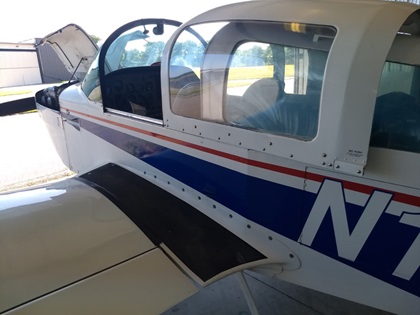
Grumman Tiger
On the other hand, in the Tiger you can slide the canopy back a few inches in flight. “I think the first thing people notice when they get in the Tiger is they love that open feeling they get with the sliding canopy,” David said. “It definitely feels like your out in the air.”
It’s also a nice feature on the ground, especially on hot summer days when you’re taxiing. It gives you a feeling of spaciousness that you don’t get in the 172, David said.
The Tiger is sportier than a Cessna 172, yet still seats four. It has pushrods instead of cables making the controls light and responsive, with a roll rate faster than a typical Piper or Cessna. It even looks fast on the ground with its bonded aluminum construction that eliminates the need for rivets.
“If you want to get out there and punch some holes in the sky and have a little bit more fun doing maneuvers, then the Tiger’s your plane,” David said.
Overall
You can’t go wrong with either a 172 or a Grumman Tiger in your club. Both are inexpensive to operate and maintain. It all comes down to what your mission is. The 172 edges out the Tiger in the training and maintenance categories, but the Tiger is certainly a better cross-country aircraft and more fun to fly.
“The Cessna is kind of like a Chevy, the family sedan,” David said. “It gets you there, it’s reasonably comfortable, it’s easy to fly and its relatively low maintenance.”
On the other hand, “You feel like you’re in a sports car when you’re in the Tiger compared to the Cessna,” David said. “It’s relatively fast and it still has all the attributes of a good trainer. It’s not complex, it’s easy to fly and it’s extremely responsive.”
If your club wants a reliable aircraft that is good for training or short cross country flights for a $100 hamburger, the 172 fits the bill. If you’re club is looking for something a little faster and a little more responsive, then the Grumman Tiger is a good option. Or just operate both in your fleet like Cape Cod Aero Club and give your members the best of both options.